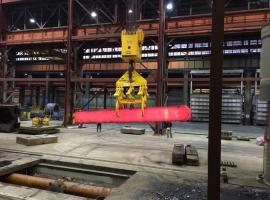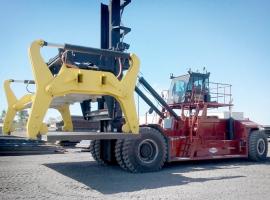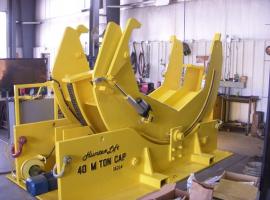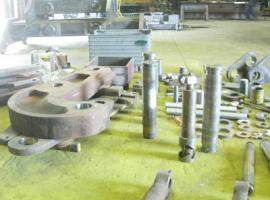Traditional rigging using slings and other hardware that can be a time-consuming process. A below-the-hook device takes those slings, hooks, and rigging additions and makes them effective. By definition, the American Society of Mechanical Engineers (ASME) describes the below-the-hook as a device that attaches loads to a hoist.
The device’s purpose is to pick and move specific loads based on their size, shape, or center of gravity. This tool attaches to a crane or lifting device and secures a load in a way that it can be moved from place to place. So what are the advantages of having one of these devices?
1. Custom Built Below-the-Hook Devices
If those attachments aren’t enough, custom below-the-hook devices are very common. The reasoning behind developing a custom bth lifting device is its the ability to move cumbersome or difficult to manage loads.
This device can be developed from scratch and engineered to meet a specific lifting need. These custom builds are added to traditional configurations for common lifting scenarios. Moving pipes/bars, coils, pallets, and other real-world applications are used by manufacturers across the world.
2. Helps Avoid Accidents
As you raise a load into the air, sometimes it doesn’t look right.
The below-the-hook lifting device can secure your load in ways other attachments can’t. Even with a secure load, rigging failure can occur.
3. Select From A Variety of Attachments
Many different types of below-the-hook lifting are available including coil hooks, gripping lifters, mechanical lifters, beams, pallet lifters, magnet lifts, the list goes on. Variety is of the utmost importance when it comes to moving your load.
Adding these attachments to the crane’s hoist will handle the positioning of the material being moved.
4. Time to Thinking About ASME B30.20
With the development of the B30 edition, the ASME decided to focus on the below-the-hook lifting device. ASME B30.20 goes into the provisions of the device.
One of the best parts of the ASME B30.20 is its adaptation and development of the below-the-hook device. The provisions span across marking, construction, installation, operation, testing, and maintenance.
It also provides some clarity regarding clamps used for positioning/anchoring. This is yet another addition to the safety standard across the bth lifting device’s history. And that’s good news for you. Take advantage of the standards today and keep your crew safe
5. Special Requirements
Before using a below-the-hook lifting device, operators are responsible for conducting pre-use inspections. Another check in the box of overall safety.
Additionally, equipment custodians are used to making sure the equipment is marked and fabricated to its specifications. A multi-check process ensures safety.
6. Lifting Devices Maximize Safety
Below the hook devices boost operational safety considerably. Traditional slings fail to secure the load while lifting, especially if the load is unique in its physical stature.
Conclusion
Lifting devices provide many advantages when it comes to moving loads throughout your operation. From customization to enhanced operater safety, below the hook lifting devices are your secret weapon to maximizing your operational efficiencies.
Hunter Lift, Ltd. is the leader in custom designed and manufactured “Below the Hook” lifting devices and mobile crane attachments. To speak with a Hunter Lift Technical Engineer, call 800-231-6501 for a no cost consultation.
And thank you for reading our blog.
Search
categories
- Select...
- Safety (13)
- Lifting Equipment (12)
- Company (6)
- Materials (5)
- Education (4)
- Services (3)
- Industries (3)
- News (3)
- Cranes (2)
- History (1)
Recent Posts
Comprehensive Guide to Below the Hook Lifting Devices The 6 Advantages of Below The Hook Lifting Devices The Keys to Safety and Design Requirements of Below-the-Hook Lifting Devices Why Below the Hook Lifting Devices Are Essential to Lifting? Requirements for Below the Hook Lifting Devicesarchives
- April 2023 (1)
- January 2023 (1)
- October 2022 (1)
- September 2022 (1)
- August 2022 (3)
- July 2022 (3)
- July 2017 (1)
- June 2017 (1)
- May 2017 (1)
- April 2017 (1)
- January 2017 (1)
- December 2016 (1)





